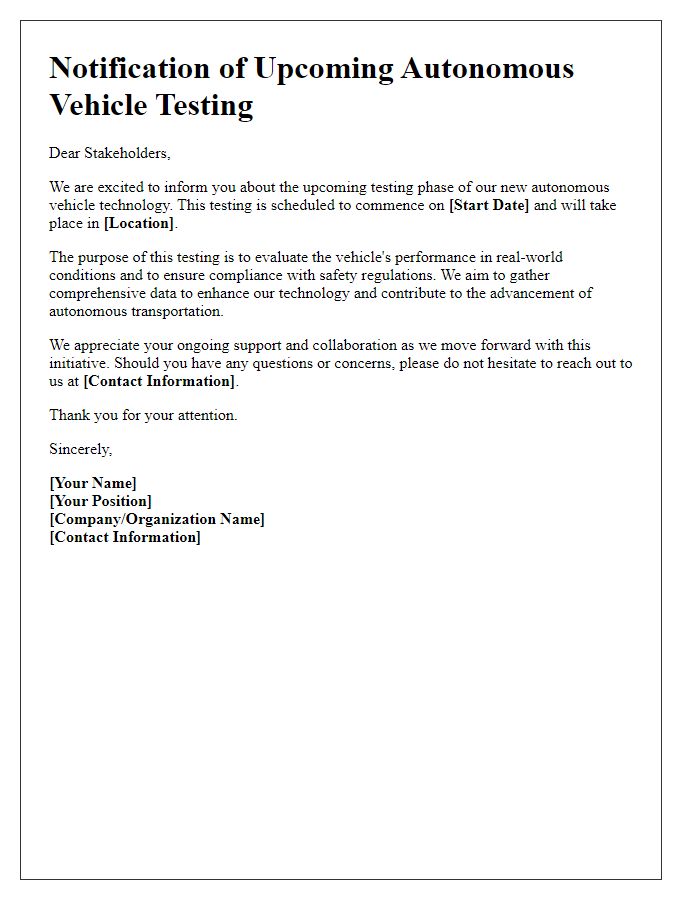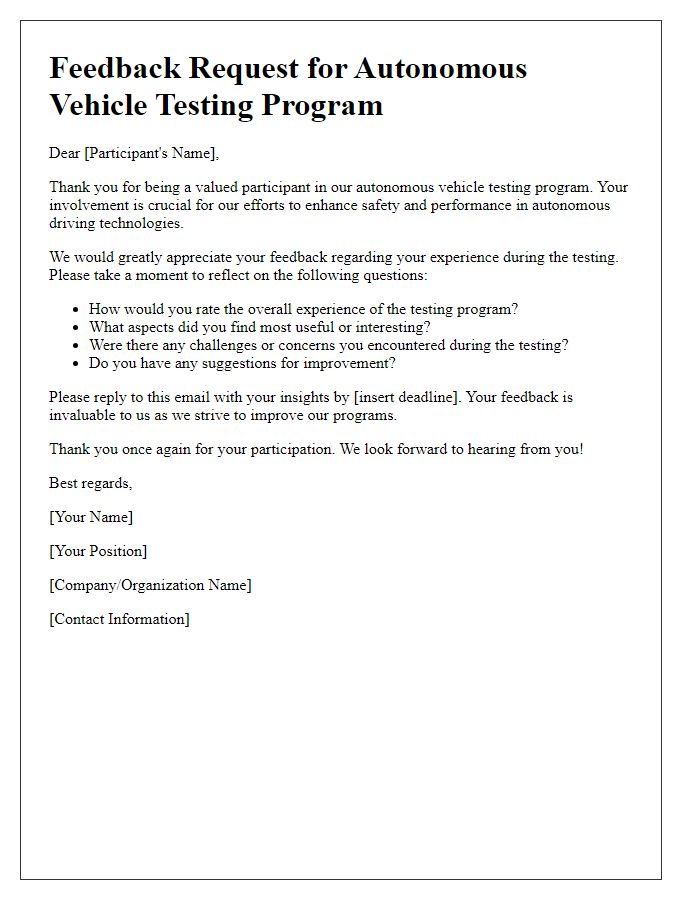As the world embraces the future of transportation, the testing of autonomous vehicles marks a significant milestone in redefining how we commute. With cutting-edge technology at the forefront, these vehicles promise enhanced safety and efficiency on our roads. However, the process of ensuring their reliability requires thorough testing and a collaborative effort from various stakeholders. Curious to learn more about the essential steps and protocols involved in autonomous vehicle testing?

Subject and Purpose of Testing
Autonomous vehicle testing, an integral aspect of the development of self-driving technologies, focuses on ensuring safety and reliability before widespread deployment. This testing involves various environments, including urban settings like San Francisco, known for its complex traffic patterns, and controlled environments such as closed test tracks equipped with traffic simulation scenarios. The primary objective is to evaluate the vehicle's ability to navigate, make real-time decisions, and interact with pedestrians, cyclists, and other vehicles seamlessly. Advanced sensors like LIDAR (Light Detection and Ranging) and cameras collect data, providing insights into the vehicle's performance under different conditions, including adverse weather situations like rain or fog. Safety benchmarks are established based on city regulations, ensuring compliance before commercial usage. Test results inform crucial adjustments in algorithms, enhancing the autonomous system's capability to function effectively in diverse real-world scenarios.
Safety Protocols and Compliance
Autonomous vehicle testing involves rigorous safety protocols to ensure compliance with regulatory standards established by organizations such as the National Highway Traffic Safety Administration (NHTSA) and the Society of Automotive Engineers (SAE). The testing environment typically includes designated closed courses and urban settings, allowing the vehicles to navigate complex traffic scenarios while minimizing risks. Key protocols include detailed sensor calibration, real-time data logging of performance metrics, and fail-safe mechanisms to handle system anomalies. Additionally, extensive simulations, often utilizing platforms like CARLA or SUMO, play a crucial role in pre-testing phases, ensuring the software can handle various environmental conditions (e.g. rain, fog) and unexpected obstacles, which could include pedestrians or other vehicles. Regular audits and documentation of testing procedures ensure transparency and adherence to both state-specific laws (such as those in California or Arizona) and federal requirements.
Technology and Features Overview
Autonomous vehicles, such as those developed by Tesla and Waymo, leverage advanced technology for enhanced safety and efficiency. Lidar sensors frequently used in these vehicles provide precise 3D mapping of the environment, allowing the vehicle to navigate complex terrains. The integration of machine learning algorithms enables real-time decision-making, ensuring optimal responses to various scenarios, including pedestrian detection and obstacle avoidance. Companies often conduct extensive testing in controlled environments, like the GoMentum Station in California, known for its 5,000 acres of secure testing grounds. The Fleet Management System monitors and analyzes vehicle performance, collecting data to improve algorithms and refine features. Moreover, Adaptive Cruise Control and Lane Keeping Assist are critical features, designed to maintain safe distances and optimal lane positioning, enhancing user comfort and safety on public roadways.
Testing Location and Duration
Testing autonomous vehicles at designated locations like the Automotive Testing Grounds in Michigan occurs over a period of four weeks, from September 1 to September 30, 2023. The controlled environment allows for rigorous evaluation under varied weather conditions, including rain and fog, essential for assessing sensor reliability and data accuracy. Specific routes within the testing grounds simulate urban settings, incorporating pedestrian interactions, traffic signals, and complex intersection scenarios. Daily testing hours extend from 8 AM to 6 PM to maximize operational efficiency while ensuring safety protocols are strictly followed during all test drives.
Contact Information and Further Inquiries
Autonomous vehicle testing involves complex regulations and safety protocols that ensure public safety and operational efficiency. Organizations engaging in testing, such as research institutions or automotive manufacturers, should provide comprehensive contact information, including a dedicated team of regulatory compliance specialists reachable by phone at a specific number or email. For further inquiries regarding testing protocols, participants can be directed to specific regulatory bodies, such as the National Highway Traffic Safety Administration (NHTSA) in the United States or equivalent entities in other countries. These organizations often provide resources and guidelines for autonomous vehicle testing, including details on necessary permits, safety assessments, and the latest technological advancements impacting testing operations.
Letter Template For Autonomous Vehicle Testing Samples
Letter template of authorization for autonomous vehicle testing in urban areas.

Letter template of request for permissions to conduct autonomous vehicle trials on public roads.

Letter template of notification for stakeholders regarding upcoming autonomous vehicle testing.

Letter template of compliance with safety regulations for autonomous vehicle operational testing.

Letter template of collaboration proposal for autonomous vehicle research and development testing.

Letter template of feedback request from participants in autonomous vehicle testing programs.

Letter template of incident reporting during autonomous vehicle test operations.

Letter template of public engagement announcement for autonomous vehicle trial demonstrations.

Letter template of partnership agreement for joint autonomous vehicle testing initiatives.





Comments